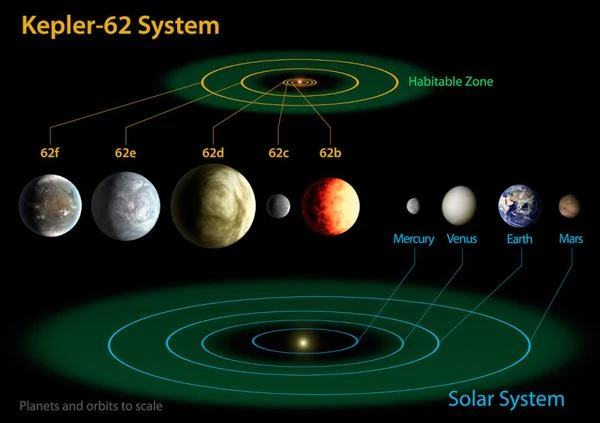
Image description: Comparison of the inner planets of our solar system with those of the Kepler-62 star system, a five-planet system located about 1,200 light-years from Earth (discovered in 2013). Image source: NASA Ames / JPL-Caltech.
A candidate exoplanet is a planet potentially orbiting a star other than the Sun, but whose existence has not yet been definitively confirmed. These candidates are typically identified through indirect detection methods, such as the transit method or the radial velocity method. For example, the Kepler Space Telescope detected thousands of candidates by observing the dimming of stars as planets pass in front of them.
A confirmed exoplanet is a planet whose existence has been validated through additional observations and in-depth analyses. This can include repeated transit measurements, spectroscopic observations to confirm the planet's mass, or direct imaging in some cases. Confirmation is essential to rule out false positives, such as binary stars or other astrophysical phenomena that could mimic exoplanet signals.
The Kepler Space Telescope, launched in 2009, revolutionized exoplanet research by identifying thousands of candidates and confirming hundreds of them. Here are some notable examples:
Thousands of candidate exoplanets have been identified, with an increasing number of confirmations. According to the latest data, over 5,000 exoplanets have been confirmed, while tens of thousands of candidates await further validation. These discoveries continue to expand our understanding of the diversity of planetary systems in our galaxy.
N.B.:
Candidate and confirmed exoplanets are key elements in the search for potentially habitable worlds and in understanding the formation and evolution of planetary systems.